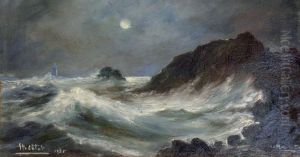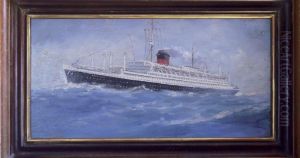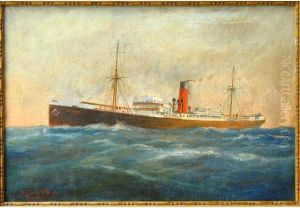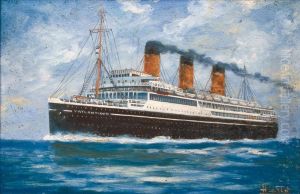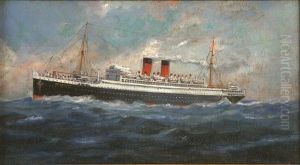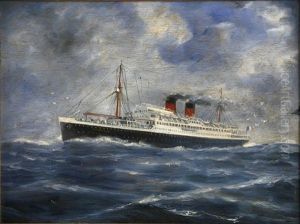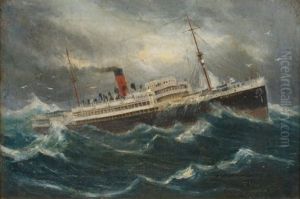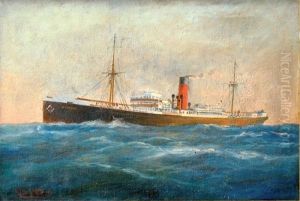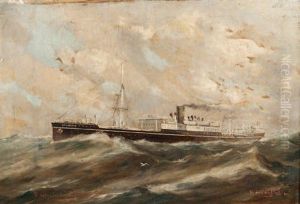Eugene Hieblot Paintings
Eugene Hieblot, though not widely known in the mainstream art world, was a significant figure in the realm of engraving and printmaking in the 20th century. Born in 1890, Hieblot's career spanned several crucial phases of modern art, reflecting the turbulent changes of his time through the meticulous and traditional medium of engraving. His life and work were a bridge between the classic techniques of the 19th century and the evolving artistic expressions of the 20th century.
Hieblot's early years were marked by a rigorous apprenticeship in the arts, where he mastered the delicate and demanding techniques of engraving. This foundation allowed him to explore both the technical and thematic potentials of the medium. Throughout his career, Hieblot was known for his exceptional skill in capturing intricate details and for his ability to convey profound narratives through the interplay of light and shadow, a hallmark of his engravings. His subjects often included landscapes, religious themes, and scenes from daily life, reflecting a deep interest in the human condition and the natural world.
During his lifetime, Hieblot's work was recognized for its artistic merit and technical proficiency. He participated in numerous exhibitions and earned accolades for his contributions to the art of engraving. Despite this, he remained somewhat on the periphery of the major movements that dominated the art scene of the 20th century, such as Cubism, Surrealism, and Abstract Expressionism. This relative isolation from the avant-garde movements did not deter him; instead, it allowed Hieblot to develop a distinct style that was both reflective of his time and deeply personal.
After World War II, Hieblot's work gained a new level of depth as he grappled with the aftermath of the conflict and the existential questions it raised. His later works are noted for their introspective quality and a heightened sensitivity to the fragility of life. Eugene Hieblot continued to work and evolve as an artist until his death in 1970. Today, his engravings are held in various private collections and museums, appreciated for their technical excellence and emotional depth. Though not a household name, Hieblot's legacy in the world of engraving and printmaking is a testament to his dedication to his craft and his ability to capture the complexities of the human experience.
